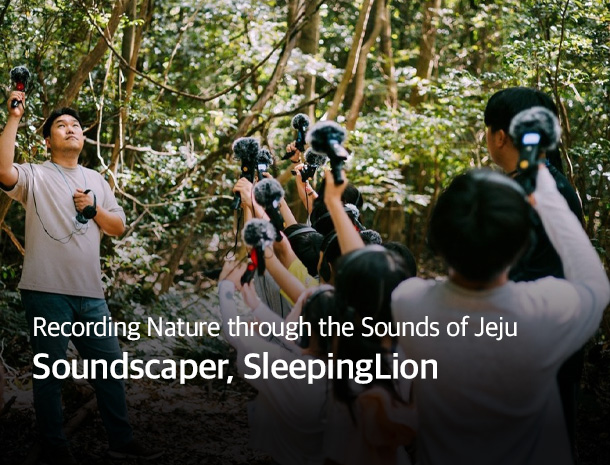Introduction of Companies
- Home
- Jeju Life
- Introduction of Companies
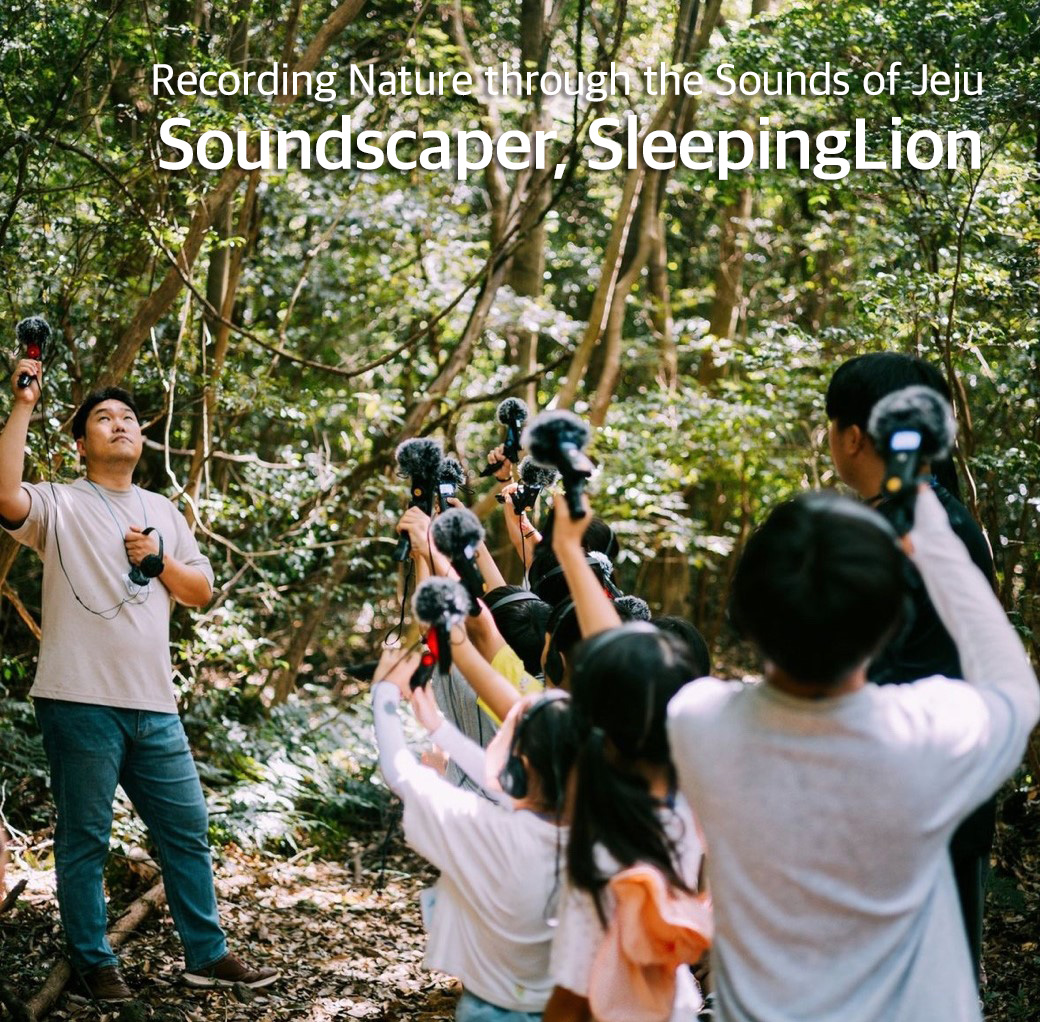
“Collecting fragments of the Earth's diverse sounds to create a soundscape is more fascinating and valuable than assembling any puzzle. We hope the sounds we capture can act as a bridge between the past, present, and future. At SleepingLion, our top priority is to document the disappearing natural sounds of Jeju and share them with many others through soundscapes.”
Lee Yong-won, CEO of SleepingLion
|
People Who Collect the Sounds of the Earth |
The sounds of nature are not infinite. This is why SleepingLion seeks out places with high ecological value rather than merely locations with pleasant sounds. With the ever-present threat of loss due to unchecked development, each moment is treated as if it could be the last. SleepingLion, inspired by its name, symbolizes boundless potential, and dreams of recording all the natural sounds on Earth one day. Jeju Island was chosen as the first base camp to pursue this ambitious mission
Q. Could you explain what soundscape is?
Soundscape is a combination of the words “sound” and “landscape,” and it involves collecting various sounds and editing them into a single work of art. It can be described as the “visualization of sound,” where sounds help to imagine the landscape. There are three main categories: geophony, the sounds of nature; biophony, the sounds made by living organisms; and anthrophony, which includes human sounds like speech and music. SleepingLion focuses on recording and showcasing geophony and biophony.
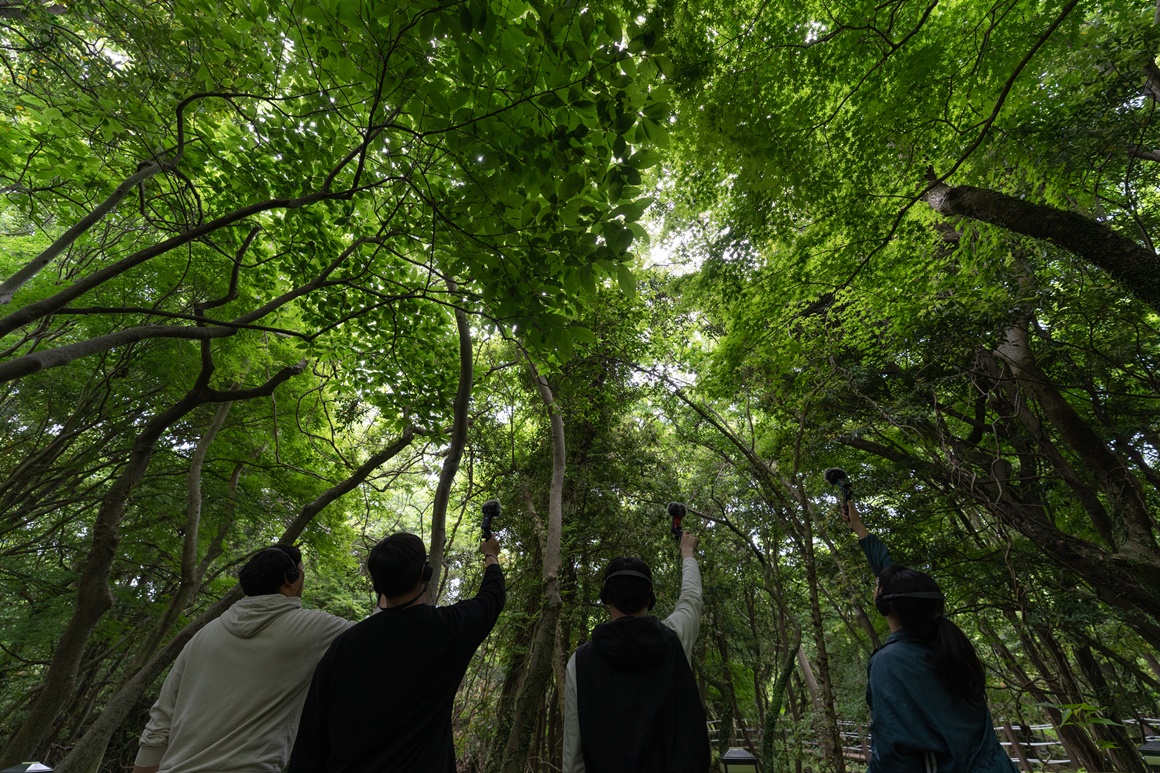
Q. What are the main business operations and services you offer?
We develop various experience programs utilizing ecological sounds. One popular program is Sound Walking, where participants take a walk through the Gotjawal forest and record the sounds of nature themselves. It is a time to clear away mental noise by listening to the wind passing through the trees or the sound of footsteps on volcanic soil. The Sound Walking program is expanding beyond Jeju through collaborations with other local governments, such as Daewangam Trail in Ulsan, Haetmaru Garden in Buan, and Juknokwon (Bamboo Garden) in Damyang. Each location offers unique sounds and local characteristics, with more locations to be introduced in the future. In 2021, we also developed and launched BebeSleep, a white noise app that helps babies sleep better by providing natural sounds from Jeju along with customized sleep education content. The app has been recognized for its excellence, being selected as a Google Play featured[1] app for two consecutive years, and is now available in 176 countries. Additionally, we curate and display soundscapes as albums on a website called Sound Bunker, engaging in various projects centered around sound.
[1] It refers to Google acknowledging the app's quality and usefulness by showcasing it as a recommended app at the top of the Play Store.
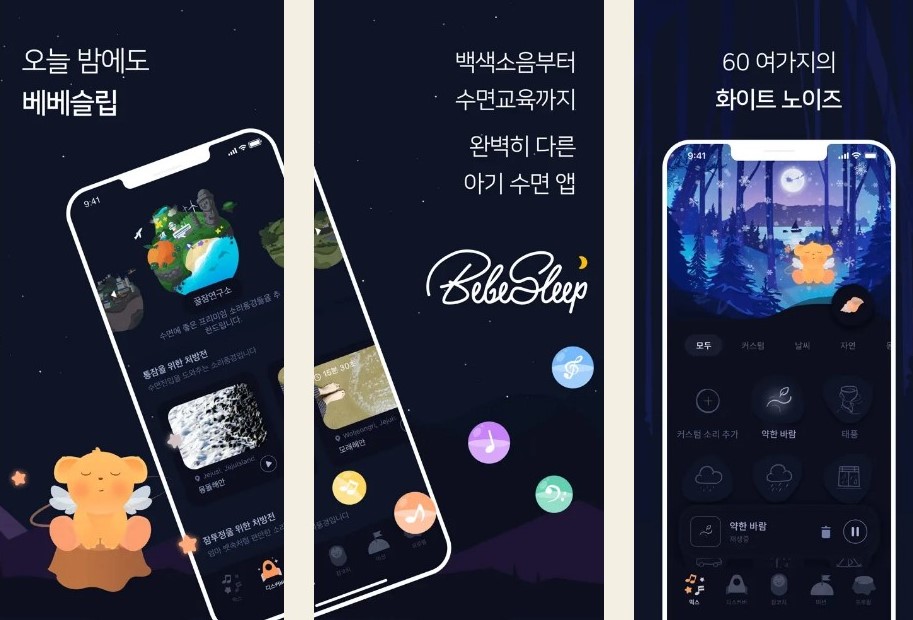
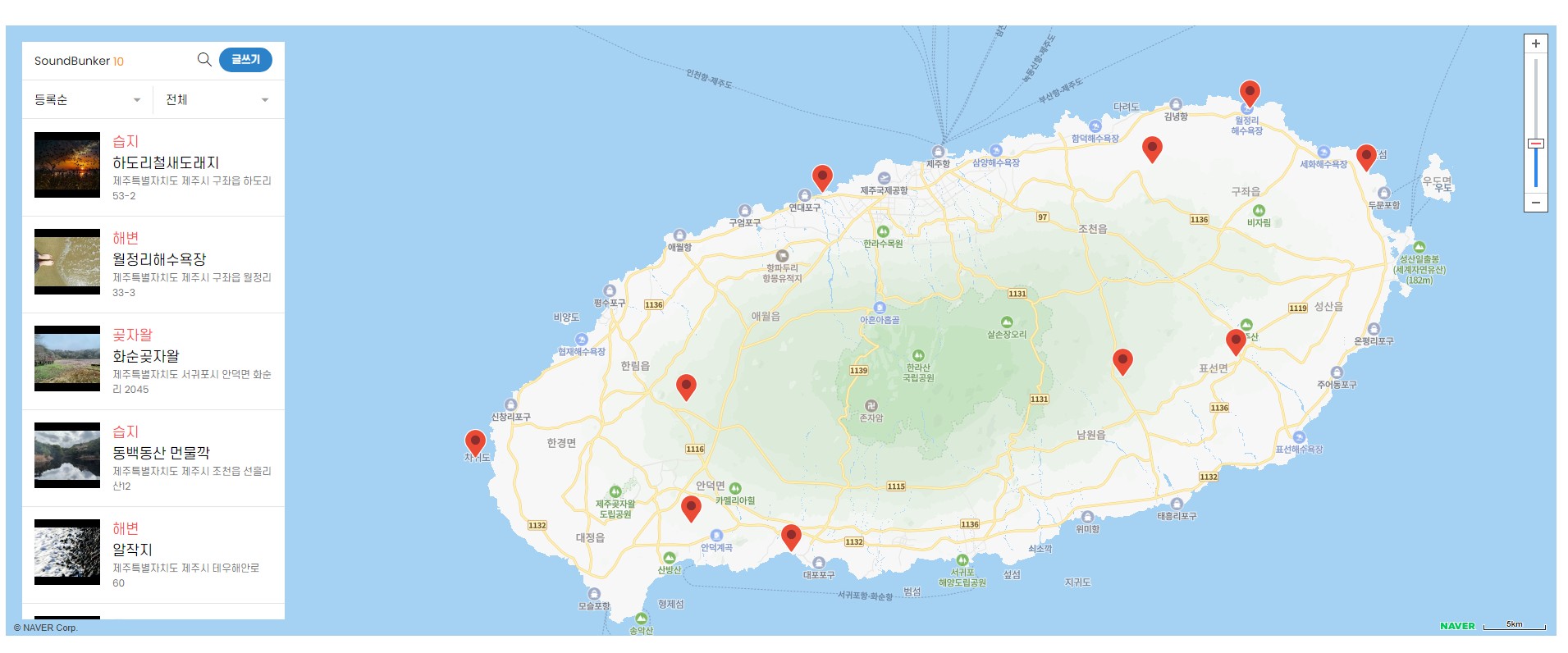
Q. In the past, you worked at the Korea Environmental Conservation Institute. How did that experience lead to the founding of SleepingLion?
It mainly involved using words, text, or images to convey information. However, I often felt there were limitations in this approach, as it seemed like we were always confined within certain boundaries. This led me to explore the possibility of engaging other senses, such as touch and hearing, as alternative means of communication. With that idea in mind, I decided to immerse myself in the field to gain firsthand experience, and that decision brought me to Jeju.
Q. Why did you choose Jeju?
When thinking of nature, Jeju was the first place that came to mind. It’s a treasure island where you can enjoy diverse sounds and landscapes all at once, including the sea, forests, lava caves, spring water, volcanic cones, and the highest mountain in South Korea, Hallasan. The island is also home to global natural heritage sites and biosphere reserves, giving it worldwide recognition.
|
The Sounds of Jeju: A New Way to Experience the Island |
Q. Could you explain the entire soundscaping process, from preliminary exploration to recording? How do you choose locations?
The process includes planning, preliminary exploration, recording, and editing. We prioritize areas currently undergoing development or slated for future development, such as Aljakji Beach and Udo Island. We also revisit certain locations during specific seasons to capture sounds unique to that time, like the calls of migratory birds or the ambiance of blooming landscapes. For instance, in the spring, we visit Geumsan Park to record the sound of rain falling on soapberry tree blossoms, while in the summer, we head to Gotjawal to capture the songs of Japanese bush warblers and black paradise flycatchers. Recording is not completed in a single session; instead, we gradually collect sounds through multiple visits at various times.
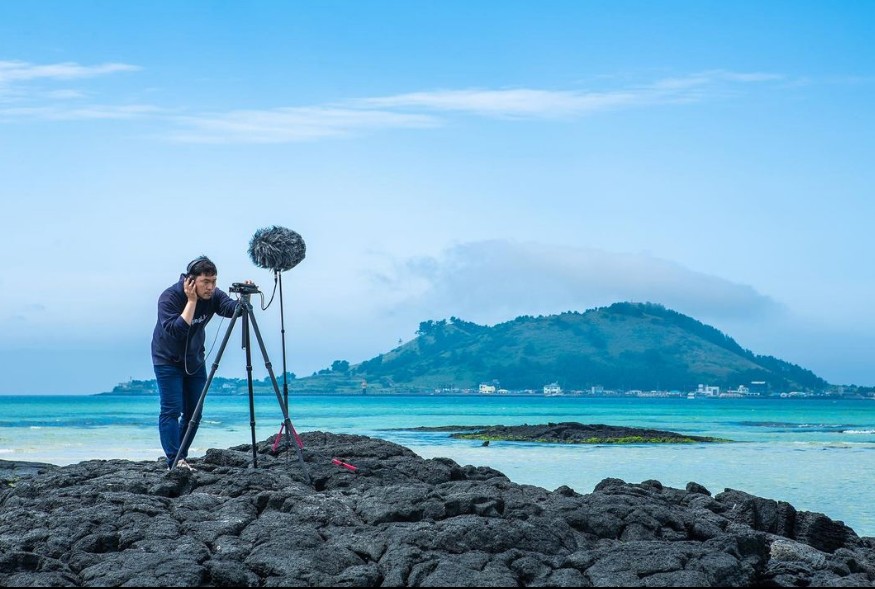
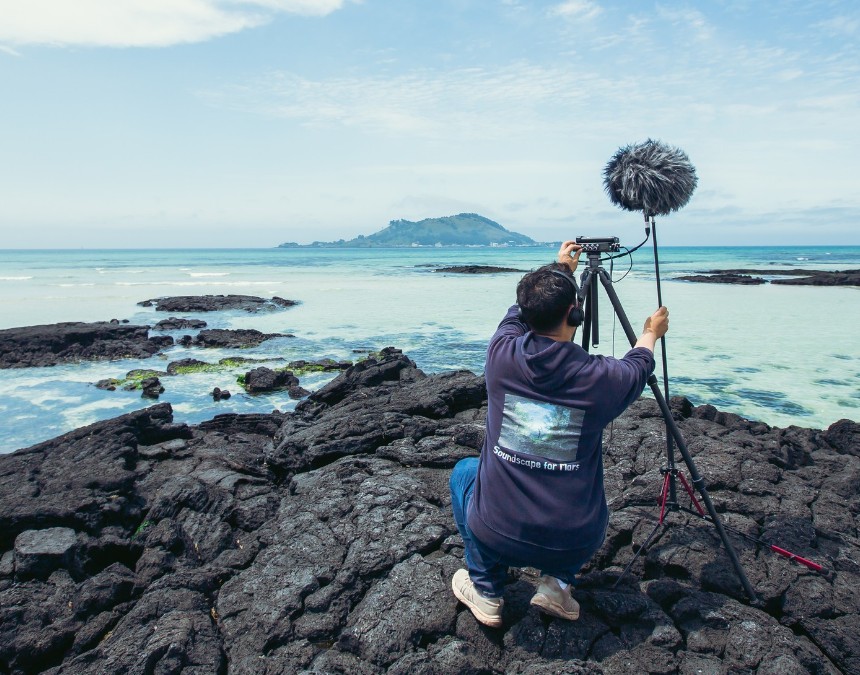
ⓒ김상준
Q. What is your favorite recording location?
I love recording at night on Geum Oreum and at dawn on Mundoji Oreum. During these times, you can hear the chorus of frogs on Geum Oreum and the birds singing on Mundoji Oreum. Another favorite is Hwasun Gotjawal, which I visit more than 100 times a year. It's a place where you can experience a variety of sounds and scenery throughout the seasons, like woodpeckers, beehives, and volcanic rock paths. While I’ve named a few places, recording nature's sounds is enjoyable and fascinating wherever I go. For example, the sound of the waves changes from beach to beach. At Jungmun, the waves are louder and longer because it's a popular surfing spot, whereas Ojori’s quieter inland waters allow you to hear birds and insects.
Q. SleepingLion is the only company in Korea to establish soundscaping as a business model. Were there challenges in building a foundation without any precedents?
The barriers to entry are quite high. The process of capturing a single sound can be challenging. To ensure high quality, we visit the same location multiple times and carefully study its terrain and geographical details. Recording for long hours in the same spot also requires physical endurance. In the beginning, convincing people of the value of soundscaping as a content form required rationale and persuasion. However, as we gained experience and built relationships with consumers and businesses, we established a solid foundation. Our signature Sound Walking program sees increasing participation each year. By 2023, we had conducted the program exclusively in Jeju, attracting 1,250 participants. Starting this year, we've expanded to other regions, like Ulsan’s Daewangam, Buan’s Haetmaru, and Damyang’s Juknokwon, fostering a culture of experiencing nature's sounds and landscapes. In 2023, total participation reached about 3,000, with a target of 20,000 for next year. Additionally, SleepingLion’s soundscapes are featured in the World Heritage Festival and educational exhibitions by the Jeju Education Office. We also offer sound-related spatial consulting for businesses and Sound Walking training for individuals, having trained around 20 instructors so far. As our business models and IP initiatives gain momentum across B2G, B2B, and B2C[1] markets, we're witnessing growth in the market compared to our early days.
[2] B2G, B2B, and B2C refer respectively to transactions between businesses and government institutions, businesses and other businesses, and businesses and consumers.
|
Capturing Nature through Sound |
Q. What kind of support did you receive from Jeju Province or institutions while laying the foundation for your business?
In 2020, we were selected for a startup support project at the Jeju Deo Keun Nae-il Center, where we received fundamental training in business planning and entrepreneurial mindset. After that, we refined our business concept and completed the incorporation process. We also utilized the funding we received to purchase essential equipment for our business, including recording devices and microphones. In 2021, we were recognized as a local creator business by the Ministry of SMEs and Startups, which helped solidify our foundation as a startup. The following year, we were selected by the Korea Tourism Organization as an early-stage tourism venture, establishing a basis for promoting soundscapes nationwide.
Q. You have been collaborating with various businesses on Jeju Island. Could you share some examples?
We co-developed an NFC transit card called “Jeju Sound: Color” with Color Lab Jeju, a company that studies the colors of Jeju. This card represents the colors of 16 locations, such as Bijarim Forest, Geomun Oreum, and Yongmeori Coast, allowing users to listen to the sounds of those places by tagging them with their smartphones. Visitors to the café “Coffee Finder” can also enjoy sounds from 10 different locations in Jeju through our specially designed drip bags. We’ve also collaborated with several hotels in the region. At the end of last year, we held a Sound Sync event for guests at the JW Marriott, where they could listen to natural melodies underwater. Additionally, we provided sound coloring postcards and Sound Walking services at the Parnas Hotel and Ramada Plaza.


Q. SleepingLion has built a diverse portfolio, including music distribution and sound tours. Are there any new content or programs you would like to try in the future?
As a company specializing in capturing and recording soundscapes, we aspire to document the sounds from various locations across the country. By around 2030, we plan to establish an offline space called the “Sound Bunker” on the west side of Jeju Island. This space will serve as a repository for the sounds of nature, like a seed bank dedicated to preserving biodiversity. It will store not only natural sounds but also the voices of people. To achieve this, we plan to visit natural heritage sites not only in Korea but around the world to collect sounds. Moving forward, SleepingLion is committed to leading the soundscape market and fostering a lifestyle that resonates with the sounds of nature.

